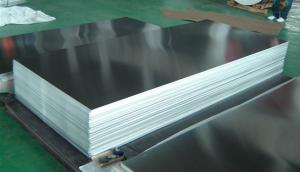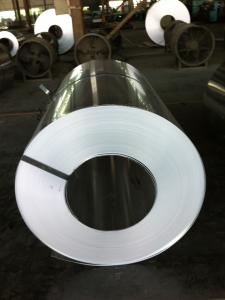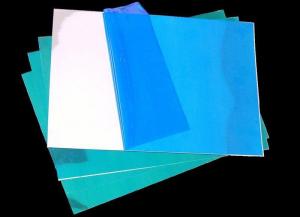Smooth Aluminum Siding Sheets - 1100-H14 Aluminum Sheet and Plate
- Loading Port:
- Shanghai
- Payment Terms:
- TT OR LC
- Min Order Qty:
- 9 m.t
- Supply Capability:
- 3000 m.t/month
OKorder Service Pledge
OKorder Financial Service
You Might Also Like
1.Structure of Product Description
1010, 1050,1060,1100, 2024, 3003, 3005, 3105, 5052,5754,5083,6061,6063,8011, etc.
The temper is include H14, H22, H24, H44,H112,H114,etc.
2. Main features of the product
a.Competitive price
b.Frist-Class Service.
c. Shortest service.
3. Image.

4. Product detailed sizes:
1000mm*2000mm, 1219mm*2438mm,1220mm*2440mm, 1250mm*2500mm,1500mm*3000mm, etc.
5. FAQ:
What is the quality standard?
---Usually our standard is GB3880-2006 or others.
What is the width range?
---It is from 1000mm to 2500mm, etc.
What is the length range:
---It is from 2000mm to 6000mm, etc.
What is the MOQ for your products yet?
---Normally it is around 5 tons/each size.
How many tons did you export in one year?
---Normally it is around 9000 tons totally.
Where is your client from?
---Normally it is from Japan, USA, ENGLISH, SINGAPORE, ETC.
What is your mainly products?
---Normally they are aluminum sheet, checkered sheet, mirror finish aluminium sheet, aluminum casting coil, etc.
- Q: What are the different joining methods for aluminum sheets?
- There are several joining methods for aluminum sheets, including welding, adhesive bonding, mechanical fastening, and soldering.
- Q: I have no idea, and I can't figure this out, and neither can my aunt and she's super smart. It's this project that's due on Monday, and if I can't get it turned in, then I get detention and a failing lab grade. The only information I have is it's $2.96 for a roll of aluminum, it contains 2.96 square meters, and it weighs .995 grams...
- say it's a trick question, because it there is no denotational value for a single aluminum atom :/
- Q: How do aluminum sheets perform in terms of vibration damping?
- Aluminum sheets are known to have excellent vibration damping properties. Due to their high density and stiffness, they effectively absorb and dissipate vibrations, reducing the amplitude and duration of vibrations. This makes aluminum sheets ideal for applications that require vibration control, such as in the aerospace and automotive industries. Additionally, aluminum's lightweight nature allows for easy installation and maneuverability, making it a preferred choice for vibration damping solutions.
- Q: what is aluminum pigment paint in the scratch cards of lottory?is it metalic or organic sabstance like latex?
- They mix aluminum or just about any opaquing material with a wax-like coating that will be easily scratched off. The early tries at this were defeated with strong lasars and cards could be read and be selected to be handed to confederates. Very fine AL power is available and is a safe product and is very opaque and cheep.
- Q: Can aluminum sheets be used for reflective purposes?
- Yes, aluminum sheets can be used for reflective purposes due to their high reflectivity and low absorption of light.
- Q: Could two pieces of aluminum sheets be welded together?
- youcan use aluminium soldering,what do you want to weld?
- Q: The user is asking if aluminum sheets can be used as a substitute for metal siding in construction.
- <p>Yes, aluminum sheets can be used to replace metal siding. They are lightweight, durable, and resistant to corrosion, making them a popular choice for siding. Aluminum sheets can be painted or finished to match various architectural styles and are low maintenance. However, it's important to ensure that the aluminum sheets are of the appropriate gauge and quality for the application, and that they are installed correctly to ensure longevity and performance.</p>
- Q: Can aluminum sheets be easily shaped or bent into desired forms?
- Yes, aluminum sheets can be easily shaped or bent into desired forms due to their malleability and ductility.
- Q: The furnace above is only hot enough to melt lead, but isn't hot enough to melt aluminum. I'm not looking for a blowtorch, or something too expensive or could melt gold, but just something that i can buy and is like the one above but isn't that expensive and can melt aluminum. Thanks!
- Aluminum melts below 1300F These gold and silver melters like the one in the link go to 2000F or more and should work for aluminum. I guess more small melters of metals want to melt gold and silver than aluminum.
- Q: I am following a recipe for braised ribs that calls for wrapping the ribs in heavy duty aluminum foil. I don't have heavy duty, so can regular aluminum foil be used as a replacement?
- Paleohacks Cookbooks + Primal Sleep : 7ce24fc1fn4o2k6fh7paq8qa2m.hop.cl... 4 Offers: Fat Burning Kitchen, 101 Anti-aging Foods, Truthaboutabs Etc : 1bb8clh1autw9k86xhr9m26x21.hop.cl... Better Breads Guilt-free Desserts: Top Converting Health Offers! : da5acmc7fr4x2nb0r3gqy4vju7.hop.cl...
Send your message to us
Smooth Aluminum Siding Sheets - 1100-H14 Aluminum Sheet and Plate
- Loading Port:
- Shanghai
- Payment Terms:
- TT OR LC
- Min Order Qty:
- 9 m.t
- Supply Capability:
- 3000 m.t/month
OKorder Service Pledge
OKorder Financial Service
Similar products
Hot products
Hot Searches
Related keywords




























